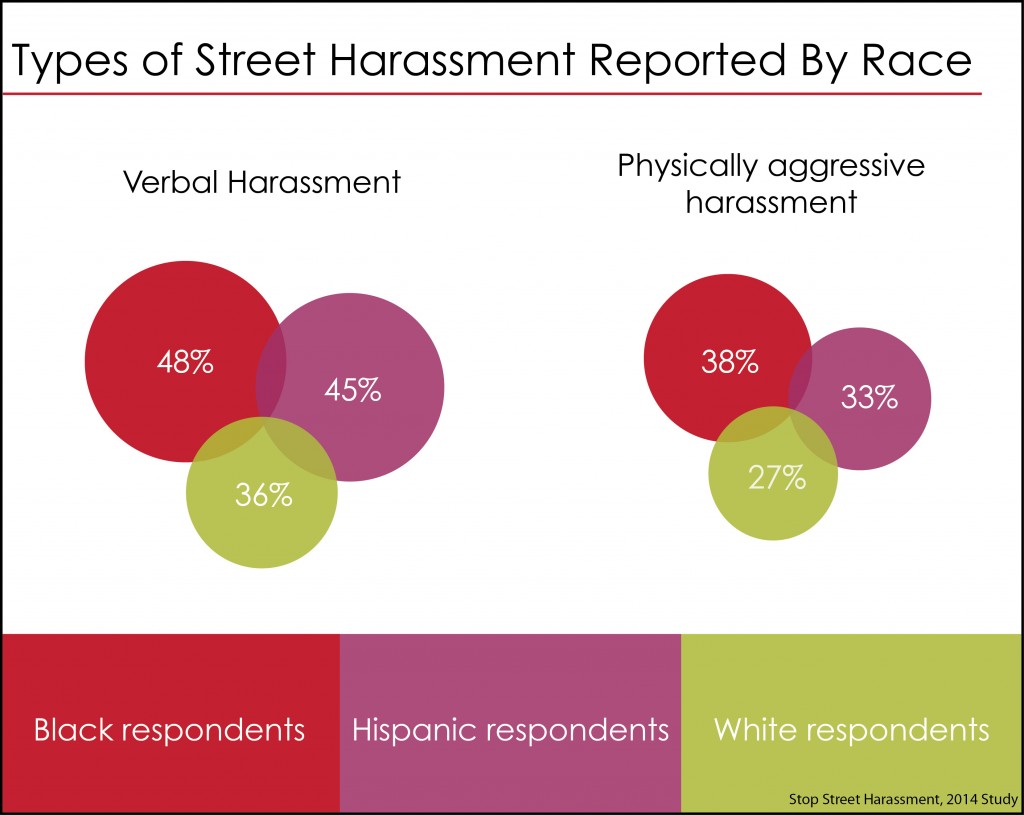Whenever I left my college campus in California, inevitably at least once man would honk, whistle or call out to me from his car. Usually it was several. It annoyed me, it made me dread going places, and I felt there was little I could do about it as these men whizzed by, safely removed from me in their cars.
I will never forget the day a man harassed me while I was on the phone with my dad and my dad heard it. He asked me in surprise if that man was talking to me. I said something like, “Yes, dad, it happens all the time when I’m walking along this street.”
He was shocked. In that moment I realized he had no idea how many times men harassed me.
At that time, I didn’t know the term “street harassment” but a few years later in 2006, I found the term on the Street Harassment Project website and wrote my master’s thesis on it. During the course of my research, I began not only educating myself about the issue, but also the men in my life, like my dad and my male partner.
They, like many straight men, were clueless about how often the women they knew faced unwanted comments, following and even touching in public spaces. So I made it a point to mention when and where I was harassed to help them understand. They believed me, they cared, and now they are outspoken against it.
In the nearly 8 years that I’ve been studying, writing and speaking out about this topic, I’ve encountered countless people who similarly have no idea how common street harassment is or how bad it can be and also those who willfully believe it doesn’t happen and that we are exaggerating or lying.
Over the past four months, there have been four different viral videos of street harassers filmed with hidden cameras on the streets of Washington, DC, Minneapolis, Cairo, Egypt, and this week, New York City. Two years ago, there was a similar video made in Brussels, Belgium. They show just how common street harassment is and provide visual examples of what it looks like. These videos are easy to digest and they are raising many people’s awareness about the problem. They prove street harassment is not made up.
But these hidden camera videos only go so far and they cannot and should not be the only way to understand the problem and raise awareness about it. This is why.
First, the women who are the subjects of these films comprise just one demographic: they are all young adult, able-bodied, seemingly heterosexual, attractive women walking alone in big cities, and the three women in the USA and in Belgium are all white. Collectively, they make the experiences of everyone else invisible. To help see the bigger picture of who experiences harassment, you can turn to Twitter, blogs, art projects, and to a nationally representative survey conducted earlier this year by GfK.
In the survey, 25% of men – largely in the LGBQT community – said they had been street harassed, as had 65% of women. Half of all harassed persons said it began before they were age 17, so lots of teenagers are harassed. Persons of color were more likely than white people to say they had been harassed. People from every region of the country and every income level reported experiencing harassment. While the survey did not ask specifically about disability or include enough transgender individuals to speak about their experiences statistically, there is no doubt from people’s stories that that they face a lot of street harassment, too.
Second, the videos do not show the full extent of harassment people experience, like being grabbed or flashed or assaulted. In the national survey, nearly one in four women had been sexually touched or groped, one in five had been followed, and nearly one in ten had been forced to do something sexual. Recently, a woman in Detroit was murdered by a harasser, while a woman in New York City was slashed by another. These scary, violent experiences is what makes a lot of the “just verbal” experiences upsetting. And of course that underlying discomfort and fear is hard to depict in a short video.
Third, by limiting the video taping to the streets, you don’t see the full range of harassers. Like men – and most harassers of women and men are male — who harass from their vehicles. Men who harass on public transportation. Men who harass in stores, restaurants, clubs, bars, parks, movie theaters, and beaches. Men who stand outside their college fraternity house or sports field and harass women walking by. I believe there would be more racial diversity, age diversity and income-bracket diversity among the harassers than the viral videos depict if it was possible to capture harassment in all of these places.
Since it is impossible to video tape every type of harasser and harassee to document – to prove – this is a problem, we need to listen to and believe everyone who speaks out to share their stories. Believe the gay man who says he is called a fag or queer; believe the transgender person who says they are called tranny and he/she; believe persons of color when they say they are called racial slurs, misidentified as a criminal or as a sex worker; believe persons with disabilities when they say they are laughed at, pointed at, and harassed; believe the teenagers who say they are harassed while commuting to and from school.
Then go a step further beyond belief, try to empathize with their experiences — even though they are not like your own — and commit to helping create a world that is safer and more welcoming for them.

